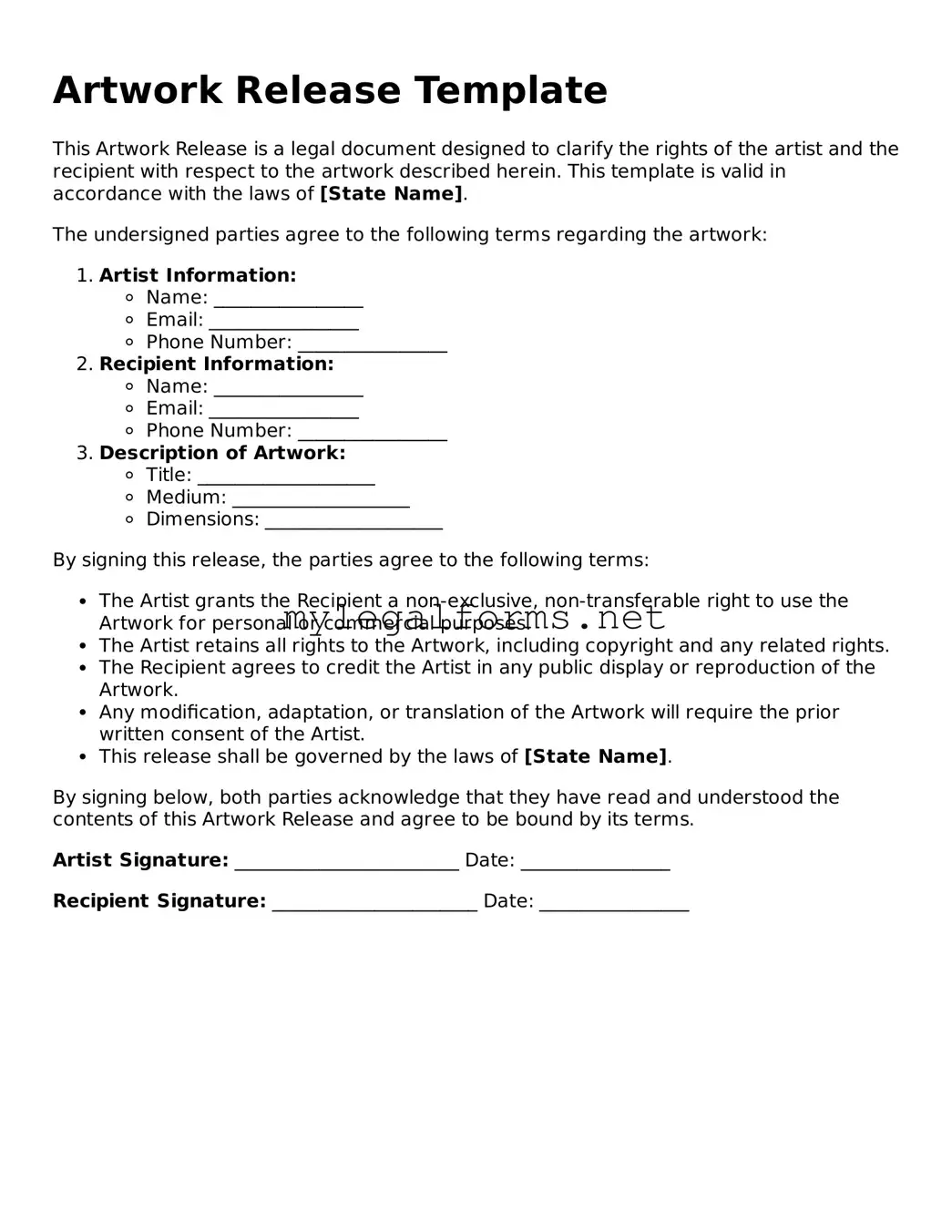Artwork Release Template
This Artwork Release is a legal document designed to clarify the rights of the artist and the recipient with respect to the artwork described herein. This template is valid in accordance with the laws of [State Name].
The undersigned parties agree to the following terms regarding the artwork:
- Artist Information:
- Name: ________________
- Email: ________________
- Phone Number: ________________
- Recipient Information:
- Name: ________________
- Email: ________________
- Phone Number: ________________
- Description of Artwork:
- Title: ___________________
- Medium: ___________________
- Dimensions: ___________________
By signing this release, the parties agree to the following terms:
- The Artist grants the Recipient a non-exclusive, non-transferable right to use the Artwork for personal or commercial purposes.
- The Artist retains all rights to the Artwork, including copyright and any related rights.
- The Recipient agrees to credit the Artist in any public display or reproduction of the Artwork.
- Any modification, adaptation, or translation of the Artwork will require the prior written consent of the Artist.
- This release shall be governed by the laws of [State Name].
By signing below, both parties acknowledge that they have read and understood the contents of this Artwork Release and agree to be bound by its terms.
Artist Signature: ________________________ Date: ________________
Recipient Signature: ______________________ Date: ________________
